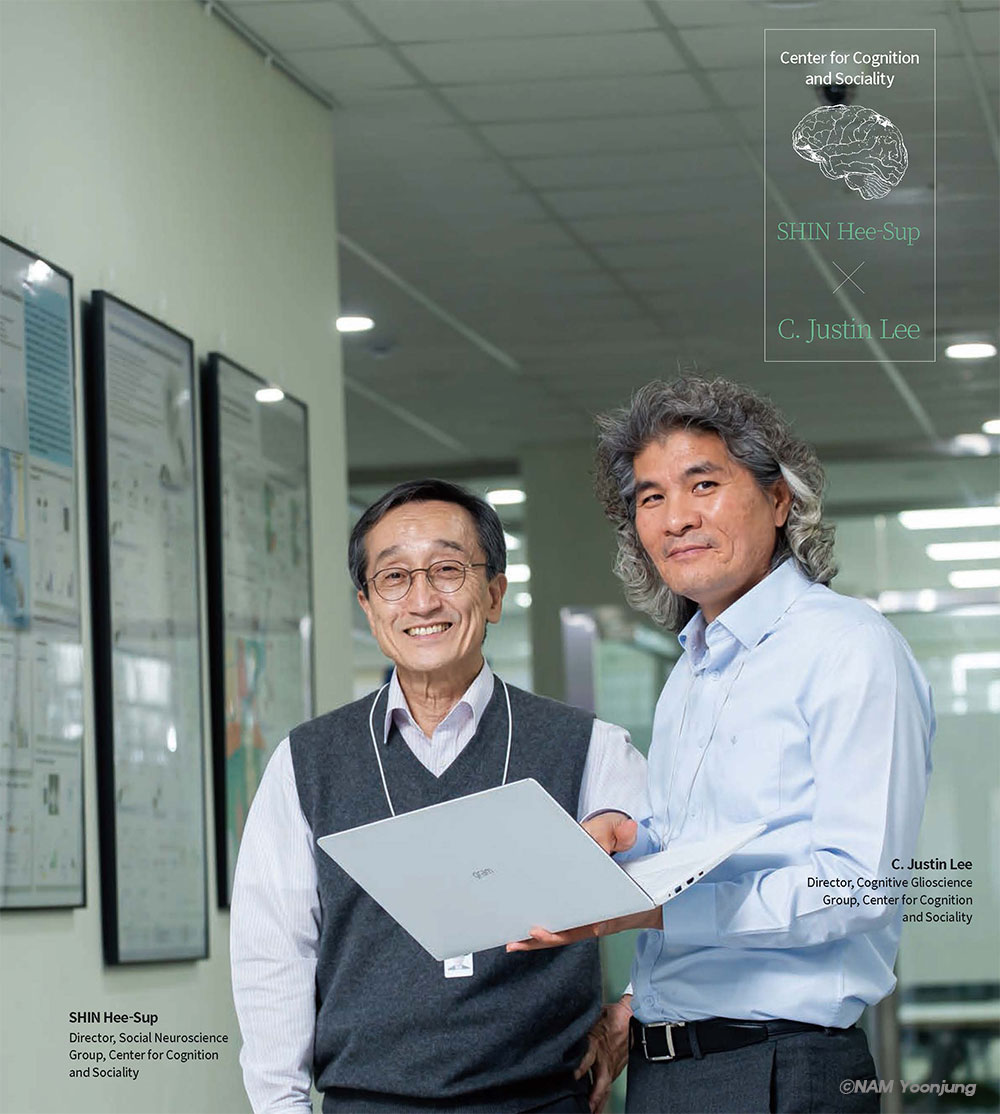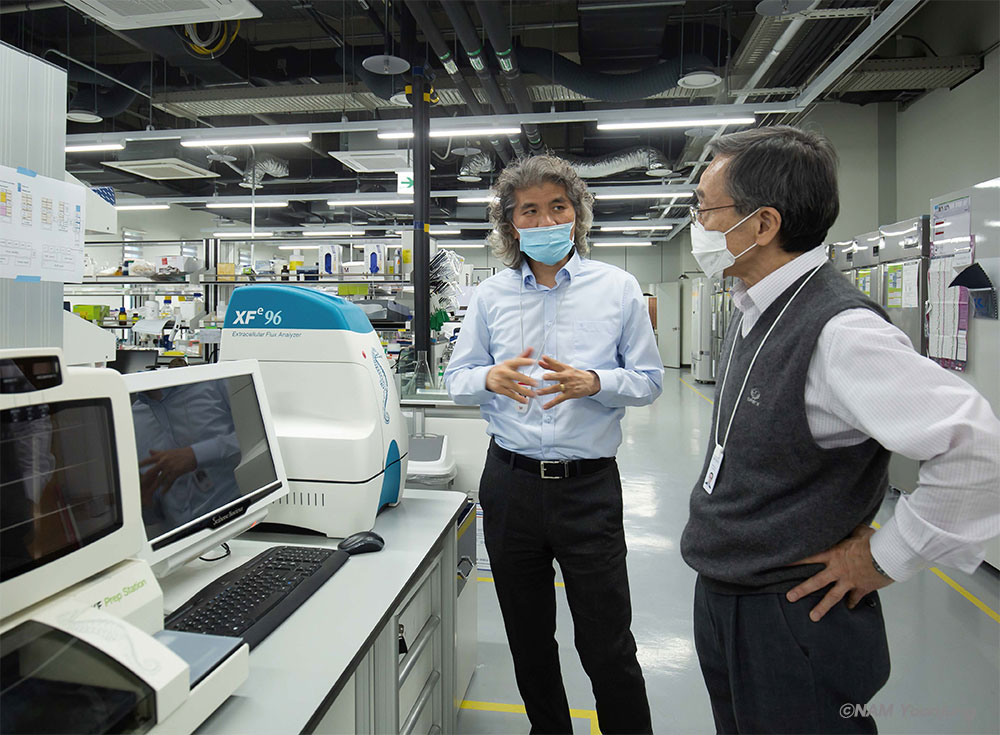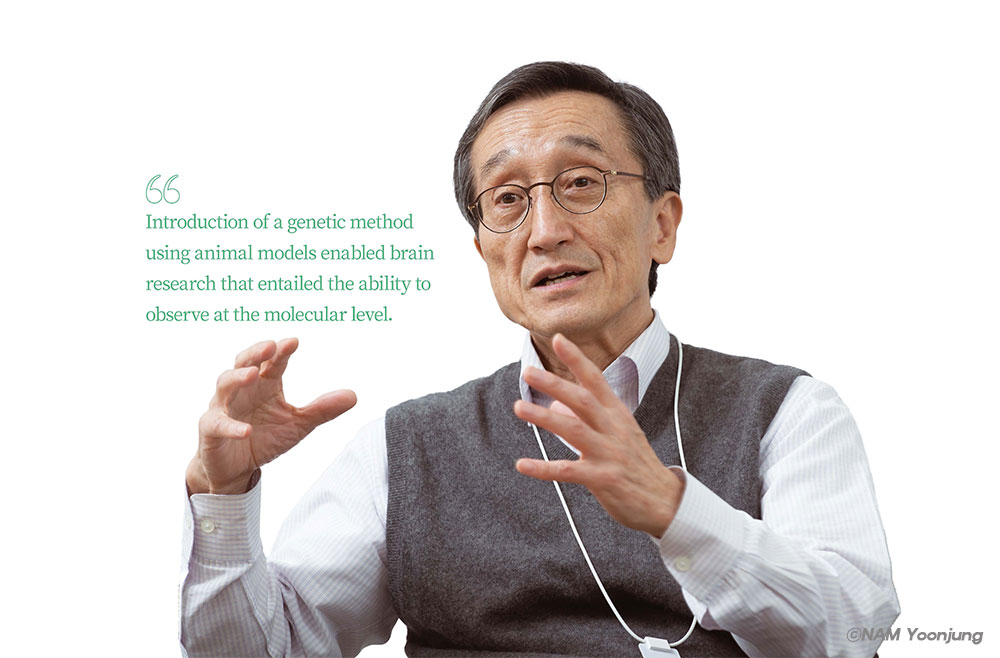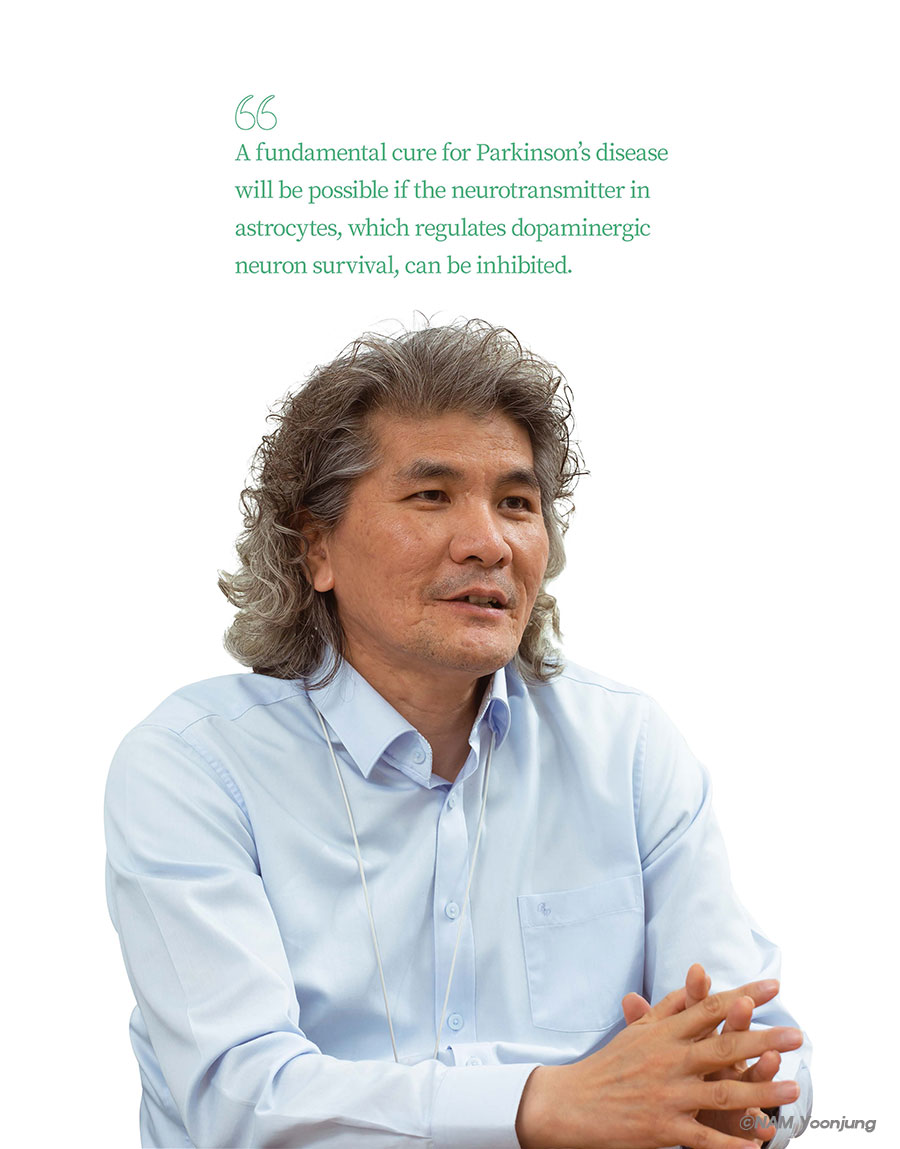주메뉴
- About IBS 연구원소개
-
Research Centers
연구단소개
- Research Outcomes
- Mathematics
- Physics
- Center for Underground Physics
- Center for Theoretical Physics of the Universe (Particle Theory and Cosmology Group)
- Center for Theoretical Physics of the Universe (Cosmology, Gravity and Astroparticle Physics Group)
- Dark Matter Axion Group
- Center for Artificial Low Dimensional Electronic Systems
- Center for Theoretical Physics of Complex Systems
- Center for Quantum Nanoscience
- Center for Exotic Nuclear Studies
- Center for Van der Waals Quantum Solids
- Center for Relativistic Laser Science
- Chemistry
- Life Sciences
- Earth Science
- Interdisciplinary
- Center for Neuroscience Imaging Research (Neuro Technology Group)
- Center for Neuroscience Imaging Research (Cognitive and Computational Neuroscience Group)
- Center for Algorithmic and Robotized Synthesis
- Center for Nanomedicine
- Center for Biomolecular and Cellular Structure
- Center for 2D Quantum Heterostructures
- Institutes
- Korea Virus Research Institute
- News Center 뉴스 센터
- Career 인재초빙
- Living in Korea IBS School-UST
- IBS School 윤리경영


주메뉴
- About IBS
-
Research Centers
- Research Outcomes
- Mathematics
- Physics
- Center for Underground Physics
- Center for Theoretical Physics of the Universe (Particle Theory and Cosmology Group)
- Center for Theoretical Physics of the Universe (Cosmology, Gravity and Astroparticle Physics Group)
- Dark Matter Axion Group
- Center for Artificial Low Dimensional Electronic Systems
- Center for Theoretical Physics of Complex Systems
- Center for Quantum Nanoscience
- Center for Exotic Nuclear Studies
- Center for Van der Waals Quantum Solids
- Center for Relativistic Laser Science
- Chemistry
- Life Sciences
- Earth Science
- Interdisciplinary
- Center for Neuroscience Imaging Research (Neuro Technology Group)
- Center for Neuroscience Imaging Research (Cognitive and Computational Neuroscience Group)
- Center for Algorithmic and Robotized Synthesis
- Center for Nanomedicine
- Center for Biomolecular and Cellular Structure
- Center for 2D Quantum Heterostructures
- Institutes
- Korea Virus Research Institute
- News Center
- Career
- Living in Korea
- IBS School
News Center
| Title | From advisor and advisee to fellow directors: Exploring the mysteries of the brain | ||||
|---|---|---|---|---|---|
| Name | Communication Team | Registration Date | 2020-09-15 | Hits | 4556 |
| att. |
 thumb.jpg
thumb.jpg
|
||||
From advisor and advisee to fellow directors: Exploring the mysteries of the brainIn 2018, the Institute for Basic Science (IBS) appointed Director C. Justin Lee of the Korea Institute of Science and Technology (KIST)’s Center for Glioscience Research as Co-Director of the Center for Cognition and Sociality. The appointment was intended to maximize research synergy by having Dr. SHIN Hee-seop, who has been the sole Director of the Center for Cognition and Sociality so far, lead the Social Neuroscience Group and Dr. C. Justin LEE lead the Cognitive Glioscience Group. Both directors worked together at KIST until Dr. Shin's appointment as Director of the IBS Center for Cognition and Sociality in 2012. Dr. Shin was the one who recruited Dr. Lee from the United States, where Dr. Lee was firmly established. IBS Research meets these two scientists, who first met as advisor and advisee but have now become fellow directors.
Serendipitous encounter at an academic conference in 2003Dr. Shin was making a presentation on the function of the PLC-β4 gene in regulating biological rhythms in the nervous system at the 2003 Cold Spring Harbor Meeting in Long Island, New York. “Dr. Shin was a well-known researcher in brain science. After his presentation, I thought astrocytes might have a role in the process and asked Dr. Shin what if I conduct this experiment. He suggested a two-week experiment in Korea.” Dr. Lee clearly remembers his first meeting with Dr. Shin 17 years ago. As a post-doc researcher at Emory University, Dr. Lee visited KIST’s Center for Neuroscience, led by Dr. Shin, to conduct the experiment, while Dr. Shin asked the president of KIST to interview Dr. Lee as a potential hire. As a result, Dr. Lee joined the Center for Neuroscience in 2004. “Dr. Lee was well-known among neurophysiology researchers at the time for his development of a software program that analyzed the electrical signal data from the nervous system. The program was quite useful for researchers,” said Dr. Shin, explaining why he wanted Dr. Lee to come to Korea. After Dr. Lee joined KIST's Center for Neuroscience, he focused on behavioral analysis based on electrophysiology, while Dr. Shin focused on fundamental neuroscience studies based on genetics. This separate yet interdependent system of the Center began to boost synergy in their studies.
For example, they both studied hypothermia from a neurological perspective. However, while studying the relationship between acetyl cholinesterase (AChE), an enzyme that breaks down the neurotransmitter acetylcholine, and dementia, they came to know that a paper on the same topic had been published abroad. Dr. Lee then suggested investigating the relationship between acetyl cholinesterase and hypothermia instead. This came after he had discovered the tendency of hypothermia in mice whose genes had been manipulated by Dr. Shin to prevent the generation of acetyl cholinesterase. Dr. Lee analyzed the electrical signals of nicotine receptors in the sympathetic nerves of mice and confirmed that the signals were 40% less frequent than in normal mice. His findings were published in the February 2007 issue of the Journal of Physiology. "I agonized over whether I should give up that project, but Dr. Shin had firmly believed in me until I shifted my interest of research beyond the brain so that I could explore original topics," said Dr. Lee. Their career paths diverged when Dr. Shin was appointed as the Director of the Center for Cognition and Sociality in 2012 but then converged again as the two became co-directors in 2018. In fact, Dr. Lee was waiting for IBS approval of his proposal to establish a new research center focusing on glioscience studies. “Since establishing a new research center requires great energy, the suggestion by the IBS to become a Co-Director for the Center for Cognition and Sociality was a great opportunity for me. I was fortunate to work with Dr. Shin again, after he accepted to run the Center together,” said Dr. Lee. “I think meeting Dr. Shin was a fate. It is an honor just to have the opportunity to work with him, whom is considered as a master in the field of brain science research.” The two were often referred to as “magnets” stuck together since they have such a long history from KIST to IBS. Korea’s first application of genetics to brain scienceThe IBS Center for Cognition and Sociality studies which nervous system paths work for cognitive functions, such as memory, emotion, and empathy. Dr. Shin was the first in Korea to apply genetics to brain science research. He drew the attention of the international community in 1997 when he discovered the PLC-β1 and PLC-β4 genes, which cause epilepsy and motor paralysis in the brain. Since then, he has identified a variety of neurological mechanisms using genetic animal models.
“Early brain science research was mostly conducted using functional magnetic resonance imaging (fMRI) to analyze changes in various parts of the brain from certain emotions, such as fear, which were intentionally triggered. Genetic animal models have enabled us to conduct brain research at the molecular level,” Dr. Shin explained. Identifying the neural circuits that determine the difference in empathy ability is one of the leading brain science studies that apply genetics. In 2018, the research team led by Dr. Shin put two mice in a separate but neighboring chambers and applied an electric shock to only one mouse. Since two chambers were partitioned by a transparent wall one mouse could see the other mouse suffering from the electric shock. The observing mouse shows freezing behavior, a sign of fear, toward the suffering of the other mouse under foot shocks. The team’s experiment involved 18 genetically different groups of mice, and found that one group of mice empathized with the pain of the other mouse. The empathetic group showed a stronger tendency of “freezing” behavior, than other mice. The genetic analysis of the 18 groups of mice found mutations in the Nrxn3 gene only in the empathetic group. The research team had the Nrxn3 gene of other mice mutated and found a higher level of empathy in the mice. The research team removed Nrxn3 from different types of neurons in the anterior cingulate cortical region of the frontal lobe and compared the empathetic ability of mice to identify the detailed mechanism of the gene. The anterior cingulate cortex is known to be involved in impulse control and emotion. The experiment showed that the empathic ability of mice increased greatly once the Nrxn3 gene was removed from the inhibitory SST neurons (responsible for regulating signal intensity). The Social Neuroscience Group of the Center for Cognition and Sociality currently is currently a global leader in studies of brain mechanism for empathic ability. In the study of the Nrxn3 gene, the research team discovered that it could increase the empathetic ability of mice towards fear by emitting light in the mouse’s head to inhibit the SST neurons. In February this year, they also developed the technology to regulate RNA movement with light. Since RNA delivers DNA information to protein, the technology opens the way to regulate protein synthesis with light. “The acquired characteristics recorded onto brains are more important than the information encoded in the genes since the brain is always learning. The advancement of optogenetics has enabled us to understand the roles of specific proteins in real time,” said Dr. Shin. Expanding research from neural cells to astrocytesThe brain is made up of approximately 1 trillion cells. About 10%, or 100 billion cells, are nerve cells (neurons), while the others are neuroglial cells. Scientists have mostly focused on neural cells so far, and so have Dr. Shin.
Dr. Lee’s main research subject is glial cells, especially the role of astrocytes. Astrocytes are cells whose protrusions extend radially like a star and are known to assist nerve cell functions. In 2010, Dr. Lee’s research findings - that astrocytes secreted the inhibitory neurotransmitter GABA - were published in the journal Science. These findings replaced the existing theory that only neurons synthesized and secreted neurotransmitters. Dr. Lee also disclosed that astrocytes release the excitatory neurotransmitter, glutamate. Still, opinions on the roles of astrocytes are controversial. Some argue astrocytes have no important role in the process of neurotransmission, which is run predominantly by neurons. “Playing such critical roles in the brain, neurons and astrocytes are both its “hardware”. Dr. Lee’s joining in our center allowed us to find more about the brain’s neurological processes involving both neurons and astrocytes. The Cognitive Glioscience Group, led by Dr. Lee, is currently studying astrocytes to investigate the mechanisms of brain disease such as dementia and Parkinson's disease. In January this year, its research - that astrocytes dominating dopamine cells can lead to Parkinson’s - was published in the journal Current Biology. Parkinson’s disease is a neurodegenerative disease showing, movement disorders, such as muscle stiffness or slowing physical movement. So far, it has been believed to be caused by the death of dopamine neurons. Dr. Lee’s research team inhibited the secretion of GABA from astrocytes in Parkinson’s disease model mice. This increased dopamine production has led to increased movements of the model mice. The research team then stimulated dopamine neurons in mice with Parkinson’s using optogenetics, and observed an improvement in symptoms as the mice showed an increased total walking distance. "At the initial stage of Parkinson's disease, the production of dopamine neurons is found to be on halt, but not total death of the cells. We should be able to cure Parkinson’s by regulating GABA, which puts dopamine neurons “in sleep”,” said Dr. Lee. Dr. Lee is now writing a paper on the role of astrocytes in the brain’s recovery from stroke. “The functional recovery of brain cells is inhibited when normal astrocytes become reactive astrocytes that secrete excessive amounts of GABA,” explained Dr. Lee Entrusting the future of the Center for Cognition and SocialityDr. Shin retires from the directorship this year. Stressing the importance of collaboration in basic science research, Dr. Shin praised Dr. Lee. “Dr. Lee has engaged in many joint studies with outstanding researchers in Korea. I learned from him seeing how he communicates so easily with many researchers.” Dr. Lee is searching for candidate substances for the treatment of dementia and other incurable diseases in collaboration with Professor LEE Hyang-beom, a well-known master in the field of fungi research, from the Division of Food Technology, Biotechnology and Agrochemistry at Chonnam National University. "This study began with a vague hope that we might find any clues in fungi for treating dementia just as penicillin, a medicine that changed the course of history, was obtained from blue mold. It is always fun to collaborate with researchers in other fields,” said Dr. Lee. Even in the short break of the interview, both naturally began discussing their ongoing research projects, an unfailing dedication and passion for science as a born scientist. What is the secret behind their such a long-time relationship, first as an advisor and advisee and now as fellow directors? “Autonomy in research that allows a researcher to readily experiment whenever questions arise is what vitalizes science. That is my research philosophy. On this, Dr. Lee and I completely agree,” said Dr. Shin. “It would be a great loss for a research center to be disbanded simply because the leader retires. I am confident that Dr. Lee will be a great successor to take over the center to move forward. |
|||||
| Next | |
|---|---|
| before |
- Content Manager
- Public Relations Team : Yim Ji Yeob 042-878-8173
- Last Update 2023-11-28 14:20















